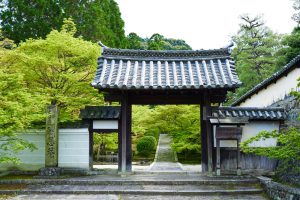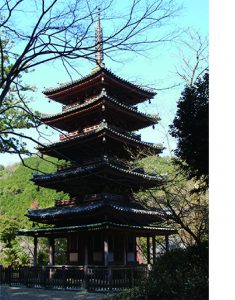Masterpieces from the Nara and Kamakura periods (Ikkyu-ji Temple)
Itinerary (300mins)
Kyoto City → [40 mins] → Kyotanabe City: Shuon-an
Ikkyu-ji Temple (40 mins) → [20 mins] → Kyotanabe City:
Omido Kannon-ji Temple (40 mins) → [40 mins] → Kizugawa
City: Kaijusen-ji Temple (40 mins) → [10 mins] → Kizugawa
City: Kunikyo Ruins (30 mins) → [60 mins] → Kyoto City
●Shuon-an Ikkyu-ji Temple
A temple with a Japanese rock garden where the monk Ikkyu spent his last years.
●Omido Kannon-ji Temple
A temple where you can see the eleven Kannon statues and receive many divine blessings.
●Kaijusen-ji Temple
The 17.7m tall five-storey pagoda, the only one built during the Kamakura period, is a national treasure which used to house statues of the four heavenly kings (the statues are currently entrusted to the Nara National Museum. The inside of the five-storey pagoda and the statues of the four heavenly kings are usually closed to the public.) The temple offers sweeping views across to Mt. Kongo and Mt. Katsuragi.
●Kunikyo Ruins
About 1300 years ago, Emperor Shomu ordered the construction of the Kuni-Kyo palace in Kizugawa, which briefly became the country’s capital between 740 and 744. By visiting these ancient ruins, you are able to get a sense that this corner of Japan played a pivotal role in Japanese history.


